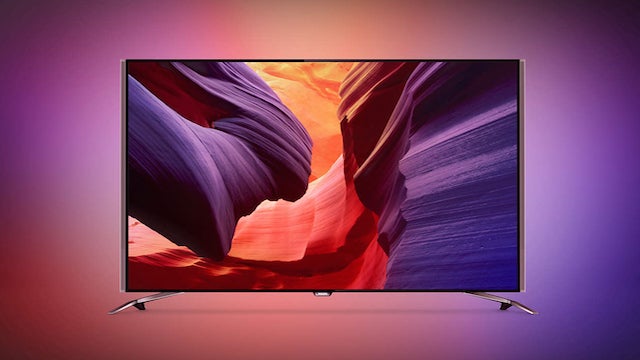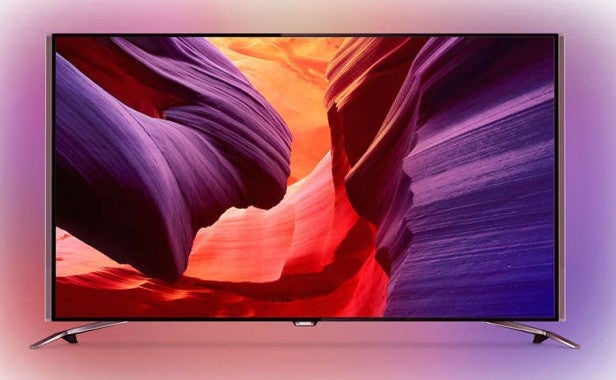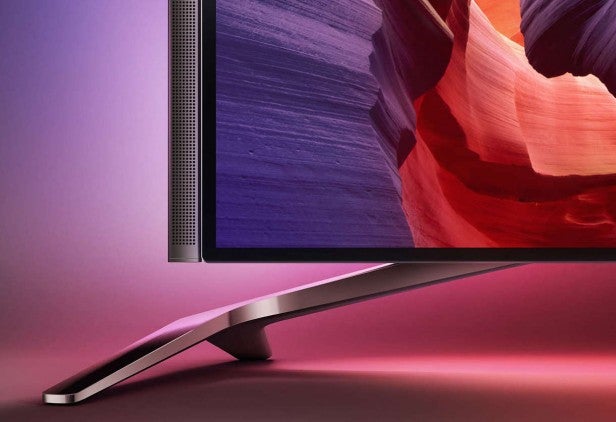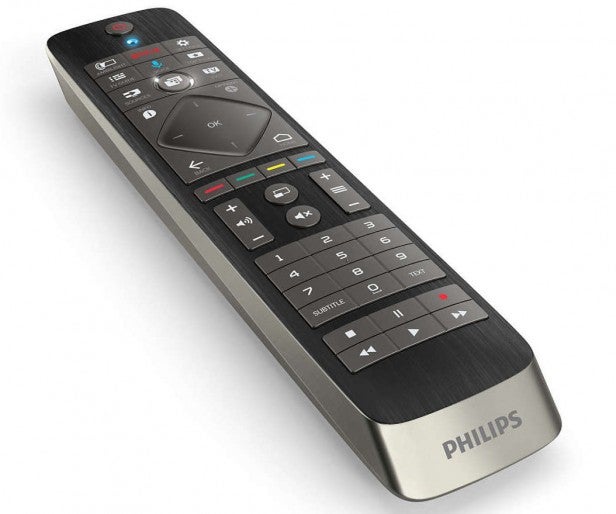Philips 55PUS8601 Review - Picture Quality Review
Picture Quality
No TV looks quite like the 55PUS8601. But is the beauty more than skin deep?

Sections
- Page 1 Philips 55PUS8601 Review
- Page 2 Picture Quality Review
- Page 3 Sound and Conclusions Review
Philips 55PUS8601 – Picture Quality
While the 55PUS8601 talks a mighty good talk where its picture quality is concerned, it doesn’t live up to the hype.
The main reason for this, although it isn’t the only one, is that it doesn’t keep up with the best of today’s screens when it comes to black-level performance. No matter which settings I used – and believe me, I spent an age trying out everything I thought might make a difference – dark scenes routinely looked greyed over, with the darkest parts looking more milky than black.
There are subtle signs of clouding too, with some areas of dark pictures looking brighter than others. In general these are to be found towards the edge of the screen, although if you use the Movie preset – which displays the backlight in its native state with minimal dynamic controls applied to it – it also becomes noticeable towards the centre of the screen.
Related: Best Value TVs 2016
If you try to achieve the best black levels by selecting the “Best Picture” setting for the Contrast Mode, you’ll also be bothered by shifts in the screen’s overall brightness as the backlight continually adjusts itself to deliver the optimum black levels based on the image content.
And for all the talk in the features section of technology for bringing shadow details out of dark areas, by the time you’ve set up the TV to achieve the best black level/brightness balance, the darkest parts of the picture actually look pretty hollow.
How successfully the 55PUS8601 handles other aspects of its picture quality depends heavily on what you feed it. With native 4K content – or, at least, bright native 4K content – the Philips screen explodes into life. The screen puts its impressive levels of brightness to great use, in conjunction with excellent motion clarity and a seriously sharp eye for fine detail, to deliver an emphatic sense of the sharpness and extra texturing that 4K brings to the party.
Colours look a touch wan with the set’s colour enhancement active but a little over the top with colour enhancement on, but the amount of tonal subtlety on show is outstanding. The set delivers a good sense of balance between all the colour tones, in fact. 
The lack of noise and grain in most of our current 4K sources helps the 55PUS8601 deliver 4K images that enjoy a clean, direct look, which goes against the idea I sometimes hear that processing-heavy TVs automatically deliver unnatural-looking images.
To my surprise, however, some of the skills the 55PUS8601 displays with 4K playback disappear with HD content. If the source you’re feeding in has any grain at all, for instance, the 55PUS8601 will find a way to exaggerate it.
Philips provides an Ultra Resolution feature for boosting the sharpness of HD sources, and while it does what it says on the tin, it also tends to over-stress grain and can cause areas of fine detail to look distractingly “alive”. However, turning this feature off with HD sources results in pictures that look so much softer that they appear slightly out of focus at times. Colours, too, slide a little off tone with non-4K content, especially where skin hues are concerned.
Attempting to get non-4K images looking as engaging and natural as they do on the best rival 4K TVs had me to-ing and fro-ing through the Philips’ huge number of picture adjustments. But nothing I did resulted in HD pictures looking quite right. In fact, the more I tried to sort things out, the more I began to feel as though some of the set’s processing features were actually working against each other at times.

It isn’t all bad news when it comes to the 55PUS8601’s pictures though. First, the screen does a very good job of soaking up reflections. Second, as long as your HD source isn’t grainy, the motion processing works well. On its low or even mid setting it removes judder without causing common artefacts such as smudgy halos around moving objects or flickering over areas of extremely fast motion.
How we test televisions
We test every TV we review thoroughly over an extended period of time. We use industry standard tests to compare features properly. We’ll always tell you what we find. We never, ever, accept money to review a product.

